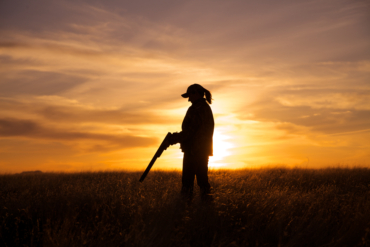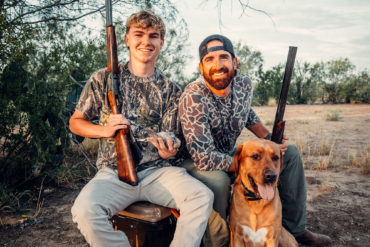The judge temporarily reverted some of Montana’s wolf hunting and trapping regulations to 2020 status. The order expires on Nov. 29.
Hunters in Montana, take note. A judge in Lewis and Clark County, Mont., issued a temporary restraining order on Tuesday, Nov. 15, that modified a variety of wolf-hunting and trapping regulations in the state.
In response to the order, Montana Fish, Wildlife, and Parks (FWP) issued a press release detailing the new regulations. The bag limit on wolves in Montana is now five animals hunted and five animals trapped, per person. The order also bans snares and reinstates the use of some Wolf Management Units (WMU) to manage Montana’s wolf population.
In these areas, wolf hunting will be limited by kills per unit, per season, as opposed to per hunter.
Unit 110, which borders Glacier National Park, now has a two-animal quota. Units 313 and 316 are north of Yellowstone National Park and have a one-animal quota each. A wolf has already been killed in unit 313 this season, meaning it is closed to further wolf hunting.
Court order changes wolf hunting season, effective immediately https://t.co/sChmiFIR94 pic.twitter.com/EnYzb51DCB
— Montana FWP (@MontanaFWP) November 16, 2022
A Series of Changes
The temporary regulations are a change from the most recent management strategies put in place by the Montana Fish and Wildlife Commission. In Aug. 2022, the Commission opted to do away with the bulk of Montana’s 18 Wolf Management Units (WMU), choosing instead to manage the population in seven larger regions and one WMU.
In the same meeting, the Commission put a six-wolf quota on an area near Yellowstone National Park and set the statewide quota at 450 wolves. (The current estimate for the Montana wolf population is just over 1,000 animals.)
In 2021, the Republican-controlled Montana state legislature passed four bills directing the Fish and Wildlife Commission to lengthen the season for wolf trapping, increase the per-person bag limit to 20, and expand quotas in areas near Yellowstone National Park.
The Commission also permitted previously illegal hunting and trapping methods like snares, bait, and spotlights statewide.
Judge Christopher Abbot’s temporary restraining order is a response to a motion filed by conservation groups WildEarth Guardians and Project Coyote.
BREAKING NEWS: Judge issues temporary restraining order curbing the number of wolves permitted to be killed adjacent to Yellowstone and Glacier national parks, reducing annual wolf “bag limit” of individual hunters by 75%, and stopping the use of snares.https://t.co/wiuev5mh37
— WildEarth Guardians (@wildearthguard) November 16, 2022
“We collectively breathed a sigh of relief when we saw this order, knowing that Yellowstone’s wolves — and wolves across the state — will have some protections in place while we wait for their day in court,” said Lizzy Pennock, a spokesperson for WildEarth Guardians, in a press release.
“This is a promising step in the right direction, and we will continue using all means necessary to end the senseless, politically-motivated slaughter of Montana’s beloved wolves,” she continued.
The 2021 Montana wolf hunting season made national news after 22 wolves from Yellowstone National Park were killed — 18 in Montana.
What Happens Next?
On Nov. 28, WildEarth Guardians, the Coyote Project, and the state will meet in court to present arguments to extend or halt the preliminary injunction. According to the Independent Record, the conservation groups’ initial filing focused on Montana’s use of patch occupancy modeling, a method of estimating wolf populations statewide based on observing wolf density in more condensed areas.
Wolf advocates argue that the method is only useful in estimating the populations of evenly distributed species. According to them, it tends to overestimate wolf populations.
The temporary restraining order expires on Nov. 29.

“Based on the face of plaintiffs’ filings, they have made colorable arguments that the state’s current wolf management practices may violate state or federal law,” the judge wrote in his order.
“… Plaintiffs have also colorably shown that several 2021 legislative enactments and implementing regulations, particularly regarding extended trapping practices and lifting quotas in areas near Yellowstone National Park and Glacier National Park may interfere with federal authority to manage wildlife in the Parks and on federal lands,” the order goes on.
Montana FWP Director Hank Worsech disagrees.
“We have a healthy and stable population of wolves in Montana,” he wrote in a press release. “We’ve proven we can manage wolves across the state and will continue to do so. We will comply with the judge’s order and look forward to the opportunity to defend good science and management strategies.”








